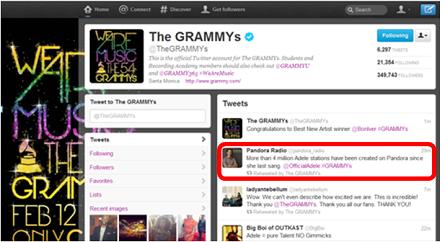As Lori Lewis will tell you, radio often struggles with social media. It is fascinating that while everyone in the business recognizes that its essence is communication, the gap between how it’s done on the air and on social sites is often vast.
While most stations understand how to talk to listeners on the radio, for some reason, it’s a whole other thing on Facebook and Twitter. The art of listening to the audience and participating in their conversations may as well be as complex as applied physics. We often refer to radio station social strategies as “random acts of digital,” and it’s easy to find examples of where it breaks down and comes up short.
In a recent interview with Nissan’s social point men, David Mingle and Erich Marx, Brian Solis asks about what challenges their team. David and Erich talk about how they are still learning about the art of conversing with their customers. And they note that one of the biggest barriers to being effectively social is time and resources. The unpredictable nature of communication with customers means there are times when acknowledgment and messaging are in great demand – so it’s tough to plan for these high-volume moments in advance.
How can brands make this transition?
Some things are simply unpredictable. Clarence Clemons and Whitney Houston “inconveniently” pass away on weekends, and many radio stations are simply unable to respond in a real-time, sincere way that their audiences have come to expect from social media. These are the moments where many stations simply come up short. (Of course, this doesn’t even address the stations voicetracking all weekend that never bothered to personalize these iconic passings.)
But when an event like the Grammy Awards comes along, it’s no surprise. We’ve known for months which Sunday in February is “Grammy Night.” Yet, how many radio brands stepped up and truly provided a space where their audiences could talk about this show – and stations could respond and engage with them?
If social media is about playing to the passion of the audience, on music’s biggest night, isn’t this an opportunity to connect with your fans? Or was it a missed opportunity?
Pandora is figuring this out, tweeting out good stuff and even getting acknowledged by the Grammy folks:
Incidentally, the Grammys were not just about Adele and Katy Perry.
The show ended on a high note, thanks to Sir Paul McCartney who performed the “Golden Slumbers Medley” with the able assistance of Bruce Springsteen, Joe Walsh, and Dave Grohl. There was something in this for Classic Rockers, too – a great way to interact with their communities in a very current way.
>CLICK HERE TO VIEW SIR PAUL AND OTHERS ON “GOLDEN SLUMBERS MEDLEY”<
Real-time conversations that matter are precious. They provide opportunities that radio never had to truly connect/interact with the people that matter on big days that everyone finds to be important and significant.
If only stations take the time and care to connect. Because if they don’t, consumers have many different places to go.
- What To Do If Your Radio Station Goes Through A Midlife Crisis - April 25, 2025
- A 2020 Lesson?It Could All Be Gone In A Flash - April 24, 2025
- How AI Can Give Radio Personalities More…PERSONALITY - April 23, 2025





Excellent discussion points in this post. The challenge continues to be how to make traditional radio ‘a cool medium’ again with younger users. I was eavesdropping two 20-something ladies the other day at a coffee shop. One was teaching the other how to ‘work around’ the hourly skip limits on Pandora. Free, interactive, and customizable is a tough perception to battle.
Andy, you’re right, but radio has inherent advantages over Pandora with its ability to create a unique local experience. A great jock can tell a story about when Whitney Houston first played in Des Moines, or meeting Clarence Clemons backstage at a concert in Buffalo. TMZ, YouTube, and everyone else has all the same tools so radio may not be “first” on any story. But it can connect that local experience that only a hometown station or DJ can. Thanks for chiming in.
Hi Fred, Again a raft of great points raised to consider… but you’re so right about that basic radio model, and the conditioning around it. The distribution model was “we talk, you listen” or “we play, and you listen”…along with “we’ll tell you when”. And where advertisers, brands etc were concerned; give us (radio) your message and “they” (listener) can hear that too.
Now there’s a whole new ACTUAL conversation that has begun, as you say in real-time… and big media and brands etc are having to learn to listen too… and there are some great stories to be heard out there.
Thanks much, Lee. We have to be sure we’re in position to be able to tell those stories. While big events like The Grammys or Whitney Houston’s passing occur just a few times a year, those moments are memorable to listeners. When “there’s no one home at radio,” they are going elsewhere for information, but to also interact and chat. This is what radio used to do well – connect people. Appreciate your thoughts.